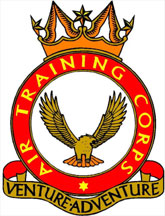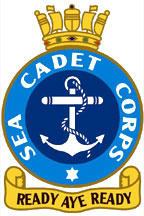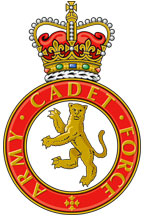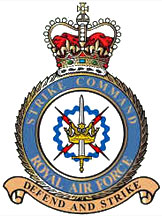Friday 11 September, 2009, 08:08 - Spectrum Management
Posted by Administrator
It seems there is nothing that visitors to the Wireless Waffle web-site like better than a list of interesting radio frequencies to have a go at listening to. Previous articles in subjects such as frequencies for London airports, tuning into US military satellites and unusual UHF activity are some of the more popular pages according to the various logs kept by our web-server.Posted by Administrator
So with that in mind, here are a few 'interesting' HF (short-wave) frequencies that might be worth a listen. Any frequency where recent activity that is most likely caused by the indicated source has been noted (either by Wireless Waffle or on other useful sources) is marked with an asterisk.
Test and Development Frequencies
2806, 5750, 7556, 9071, 10438, 11117, 16014, 18990, 20990, 24135 and 26218 kHz
According to the 2007 UK frequency allocation table (Annex I) these frequencies are the preferred HF frequencies for test and development use (interestingly they have disappeared in the 2008 version. Anyone with a test and development licence is allowed to use powers of up to 100 Watts on these frequencies with a bandwidth of up to 25 kHz. Some years ago, whilst working for a manufacturer of military HF radio equipment, tests of the equipment 'on-air' were witnessed by the Wireless Waffle team using one of the rare 'G9***' UK callsign (the exact call letters of which have been forgotten) and it's fairly certain that these were the frequencies that were used. May be worth a tune around to see what else goes on here.
 Air Cadet Frequencies
Air Cadet Frequencies2368, 2490, 2848.5, 3236*, 3306, 3343, 3678, 3715 and 3752 kHz
(Channel designations Lima 1 through Lima 9 respectively)
5245, 4925 and 5088 kHz
(Channel designations November 1 through November 3)
5770*, 5795, 7740, 6775 and 7721 kHz
(Channel designations Hotel 1 and 2, and 5 through 7)
8120, 13545, 10843.5, 14500, 13445 and 13965 kHz
(Channel designations Oscar 1 through 6)
Air cadets are permitted to use these frequencies with powers of up to 350 Watts (a few are restricted to 100 Watts) for communication. Voice and data can both be used (some channels are data only). Checking a few of the channels revealed occasional strong blasts of data. Note that some of the Lima channels are in the 80 metre amateur band!
 Sea Cadet Frequencies
Sea Cadet Frequencies2122.5, 2695, 3660, 6805, 6875, 6992.5* and 8187.5 kHz
(Channel designations SCO01, 02 and 11 to 15)
Sea cadets are permitted to use between 25 and 100 Watts on these frequencies. Again note the channel (in this case 3660 kHz) in the middle of the 80 meter amateur radio band.
 Army Cadet Frequencies
Army Cadet Frequencies2275*, 2415*, 2770*, 3850*, 3865*, 4920, 4922.5*, 4955, 5330, 5345, 6915, 7710 and 7753 kHz
Note that for these frequencies (and those for the other cadet forces), the listed frequencies are supposed to represent the centre of the channel. As such, if listening to an SSB signal, it is necessary to tune 2 kHz lower than the listed frequency. So if you want to listen to 5330 kHz (supposedly a common calling channel for the army cadets, tune initially to 5328 kHz). Also, operation is allowed within 5 kHz of these frequencies so listening plus or minus a bit may yield something interesting.
The sea cadet and RAF cadet frequencies are taken from official publications, whereas the army cadet frequencies are based on an extensive search and cross-check of internet sources but these may not be as accurate as the earlier two!
 RAF Flight Watch (TASCOMM)
RAF Flight Watch (TASCOMM)4742*, 5702*, 9031*, 11247, 13257 and 18018 kHz
TASCOMM is part of the Defence High Frequency Communication Service (DHFCS) which is managed from the network control centre at Forest Moor. They are the frequencies used by the RAF. DHFCS also managed the HF frequencies for the Army and Navy too. Transmitters are often high power and are located both in the UK and at some overseas military bases (such as Cyprus and Ascension). The net controller uses the callsign 'XSS'.
Note that those frequencies market with an asterisk (*) are ones on which either activity has recently (ie in the past 5 years) been reported somewhere on-line, or where the Wireless Waffle receiver has noted activity.
Now it would be good to try and make something of this list and identify lots of 'secret military HF bands' where there were hotspots of activity, however no such hotspots really emerge, instead there are a few warm damp patches which might be worth exploring. Where there is any commonality between these frequencies it is in the ranges {the ITU allocation to these bands is shown in curly brackets}:
- 3660 - 3865 kHz (6 assignments) {Mobile/Land Mobile};
- 4742 - 5088 kHz (6 assignments) {Mobile/Land Mobile/Aeronautical Mobile (OR)};
- 5702 - 5795 kHz (4 assignments) {Land Mobile/Aeronautical Mobile (OR)};
- 6775 - 6992.5 kHz (5 assignments) {Mobile};
- 7556 - 7753 kHz (5 assignments) {Mobile};
- 8120 - 8187.5 kHz (2 assignments which is not exactly conclusive) {Maritime Mobile}; and
- 9031 - 9071 kHz (again 2 assignments) {Aeronautical Mobile/Fixed}.
 In almost all of these cases, the frequencies concerned fall within the 'Mobile', 'Land Mobile', in the case of TASCOMM, in the 'Aeronautical mobile (OR)' and in the case of the Sea Cadets the 'Maritime Mobile' services of the ITU and as such are almost exactly where you would expect to find them had you decided to look there in the first place. The only oddity is the test and development frequency at 9071 kHz which is in a 'Fixed' band, but then again, this is not a military frequency and it's quite possible that someone somewhere might want to test an HF fixed link.
In almost all of these cases, the frequencies concerned fall within the 'Mobile', 'Land Mobile', in the case of TASCOMM, in the 'Aeronautical mobile (OR)' and in the case of the Sea Cadets the 'Maritime Mobile' services of the ITU and as such are almost exactly where you would expect to find them had you decided to look there in the first place. The only oddity is the test and development frequency at 9071 kHz which is in a 'Fixed' band, but then again, this is not a military frequency and it's quite possible that someone somewhere might want to test an HF fixed link.So, sadly, no secret service special frequency bands have been identified but at least it seems that the United Kingdom's armed forces are doing their bit to uphold the sanctity of the ITU frequency allocation table.
add comment
( 2415 views )
| permalink
| 



 ( 2.7 / 31221 )
( 2.7 / 31221 )




 ( 2.7 / 31221 )
( 2.7 / 31221 )

